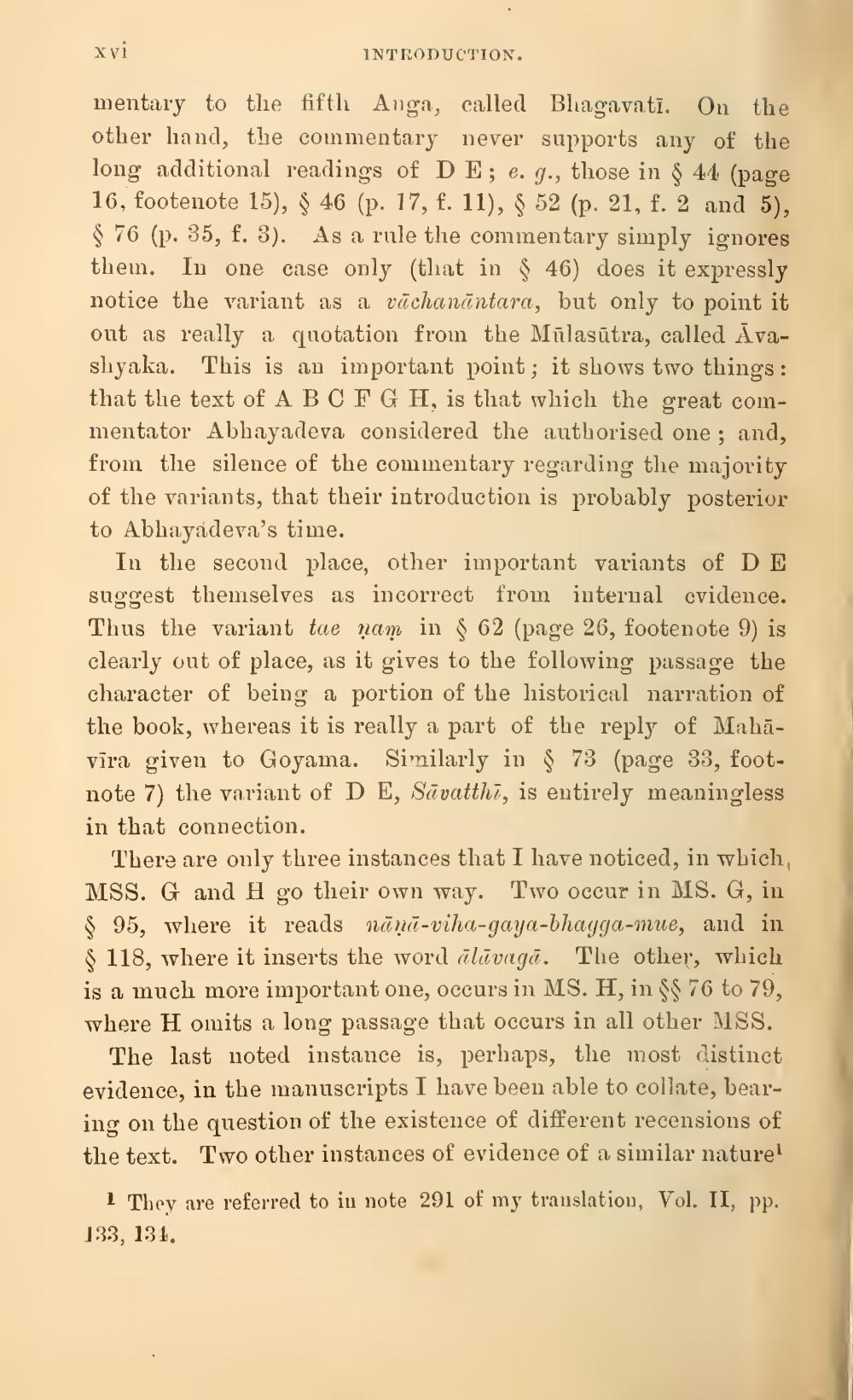________________
Xyi
INTRODUCTION.
mentary to the fifth Anga, called Bhagavati. On the other land, the commentary never supports any of the long additional readings of D E; e. g., those in § 44 (page 16, footenote 15), § 46 (p. 17, f. 11), § 52 (p. 21, f. 2 and 5), $ 76 (p. 35, f. 3). As a rule the commentary simply ignores them. In one case only (that in § 46) does it expressly notice the variant as a vāchanāntara, but only to point it out as really a quotation from the Mīlasūtra, called Āvashyaka. This is an important point; it shows two things : that the text of A BCF G H, is that which the great commentator Abhayadeva considered the authorised one; and, from the silence of the commentary regarding the majority of the variants, that their introduction is probably posterior to Abhayadeva's time.
In the second place, other important variants of D E suggest themselves as incorrect from internal cvidence. Thus the variant tae nam in § 62 (page 26, footenote 9) is clearly out of place, as it gives to the following passage the character of being a portion of the historical narration of the book, whereas it is really a part of the reply of Mahāvira given to Goyama. Similarly in $ 73 (page 33, footnote 7) the variant of D E, Sāvatthi, is entirely meaningless in that connection.
There are only three instances that I have noticed, in wbich, MSS. G and H go their own way. Two occur in MS. G, in $ 95, where it reads nāņā-viha-gaya-bhayga-mue, and in $ 118, where it inserts the word ālāvagā. The other, which is a much more important one, occurs in MS. H, in SS 76 to 79, where H omits a long passage that occurs in all other MSS.
The last noted instance is, perhaps, the most distinct evidence, in the manuscripts I have been able to collate, bearing on the question of the existence of different recensions of the text. Two other instances of evidence of a similar naturel
1 They are referred to in note 291 of my translation, Vol. II, pp. 133, 131.




